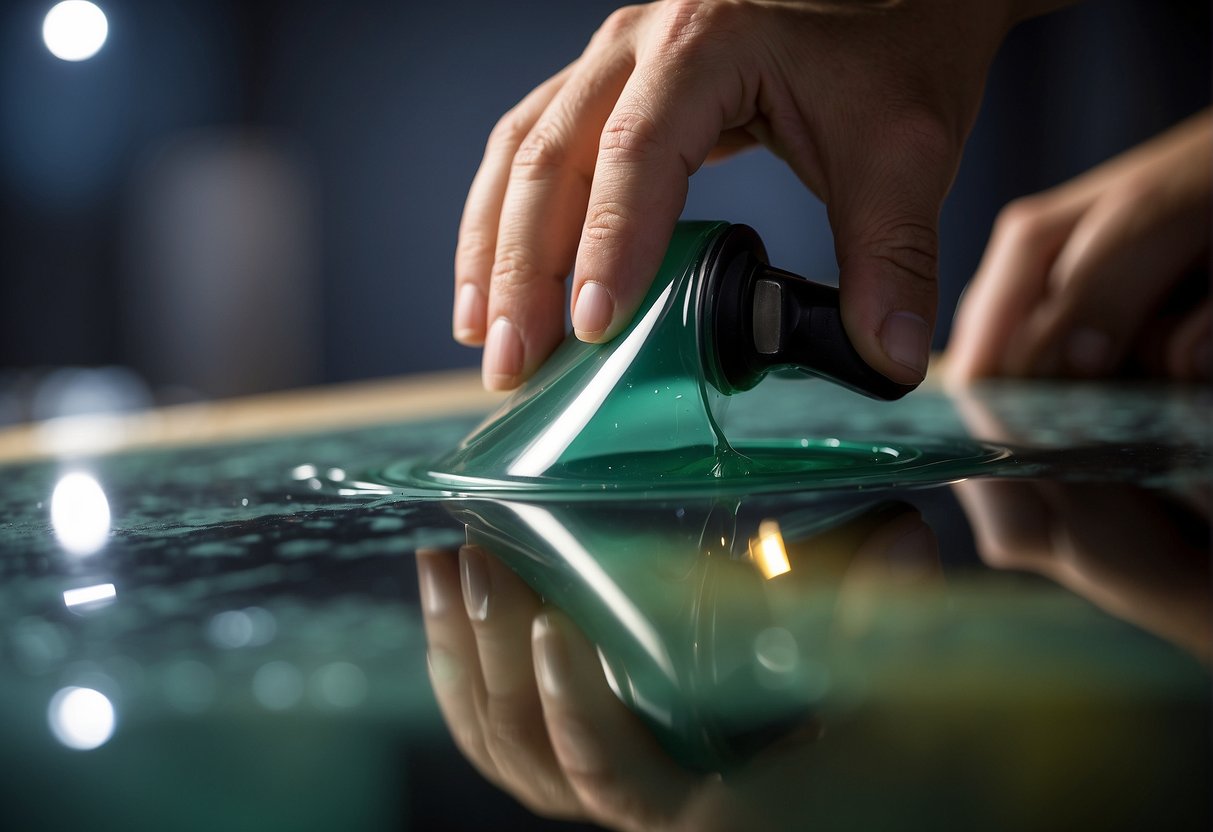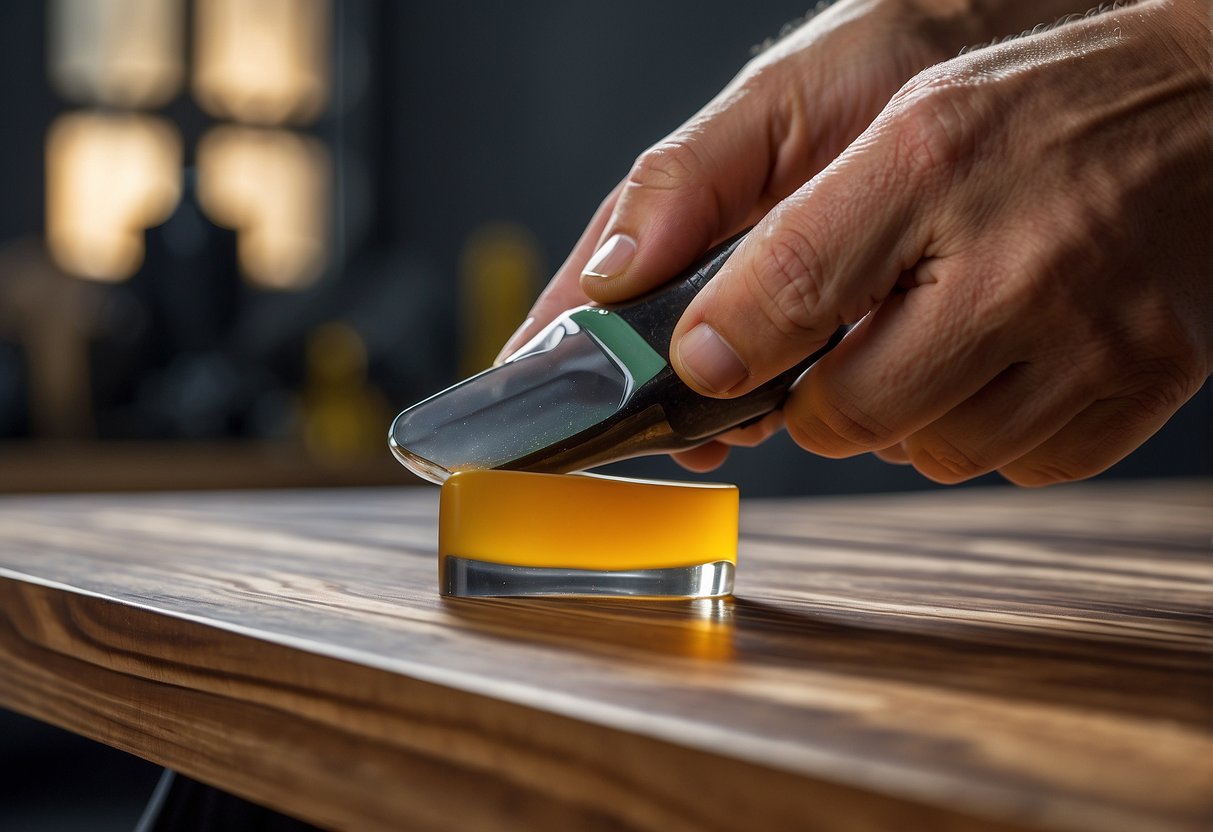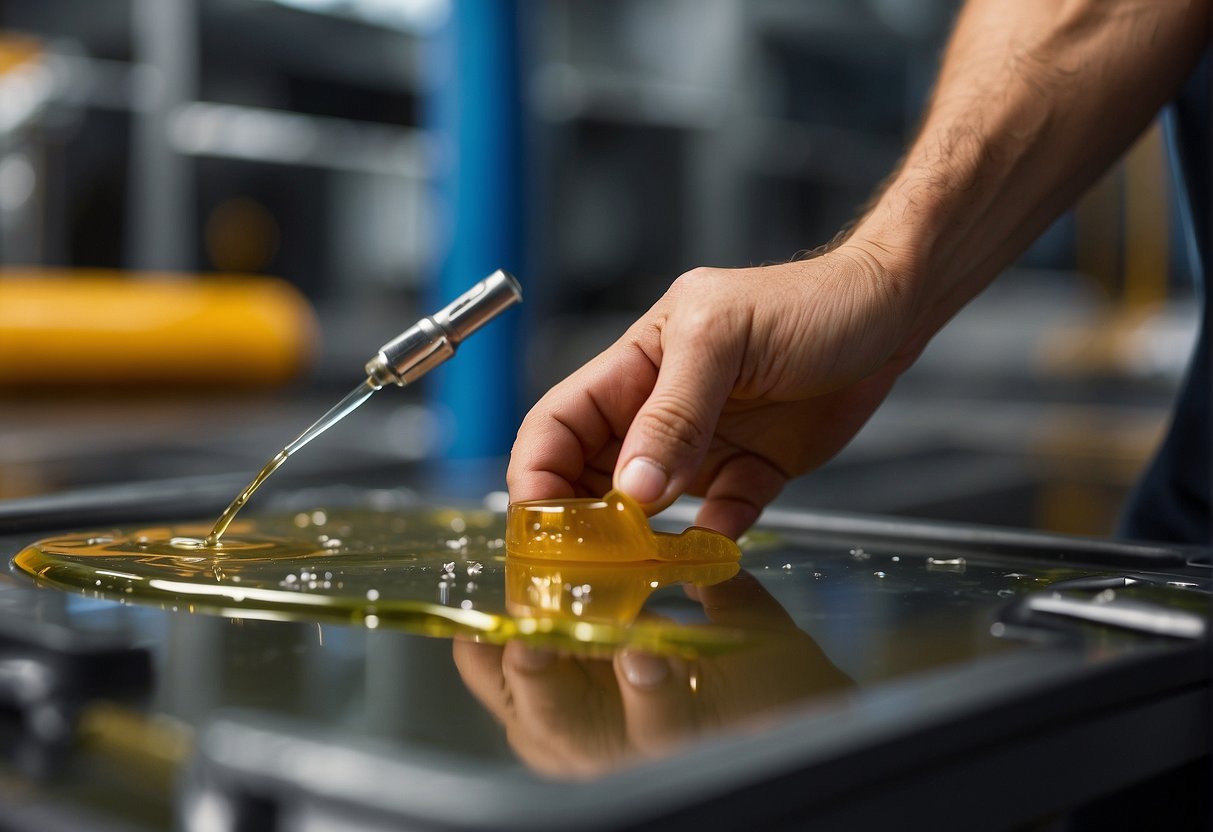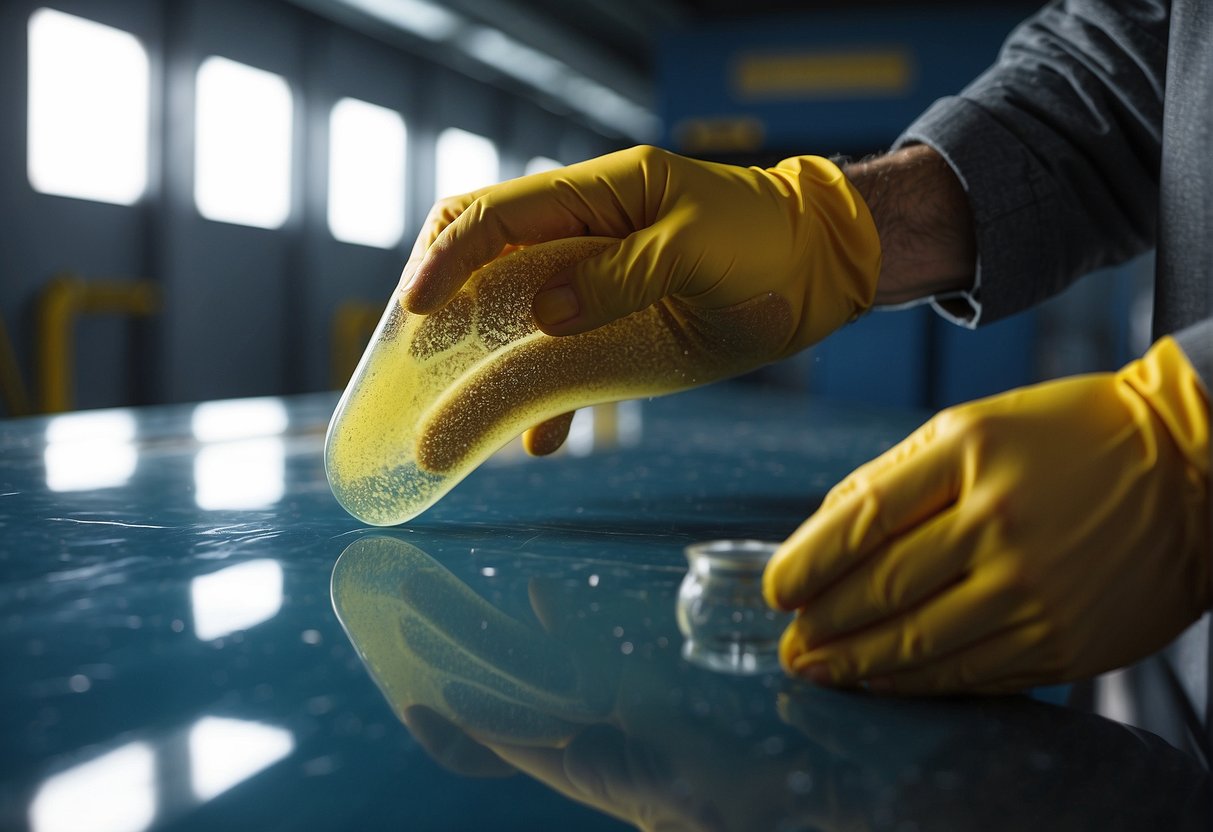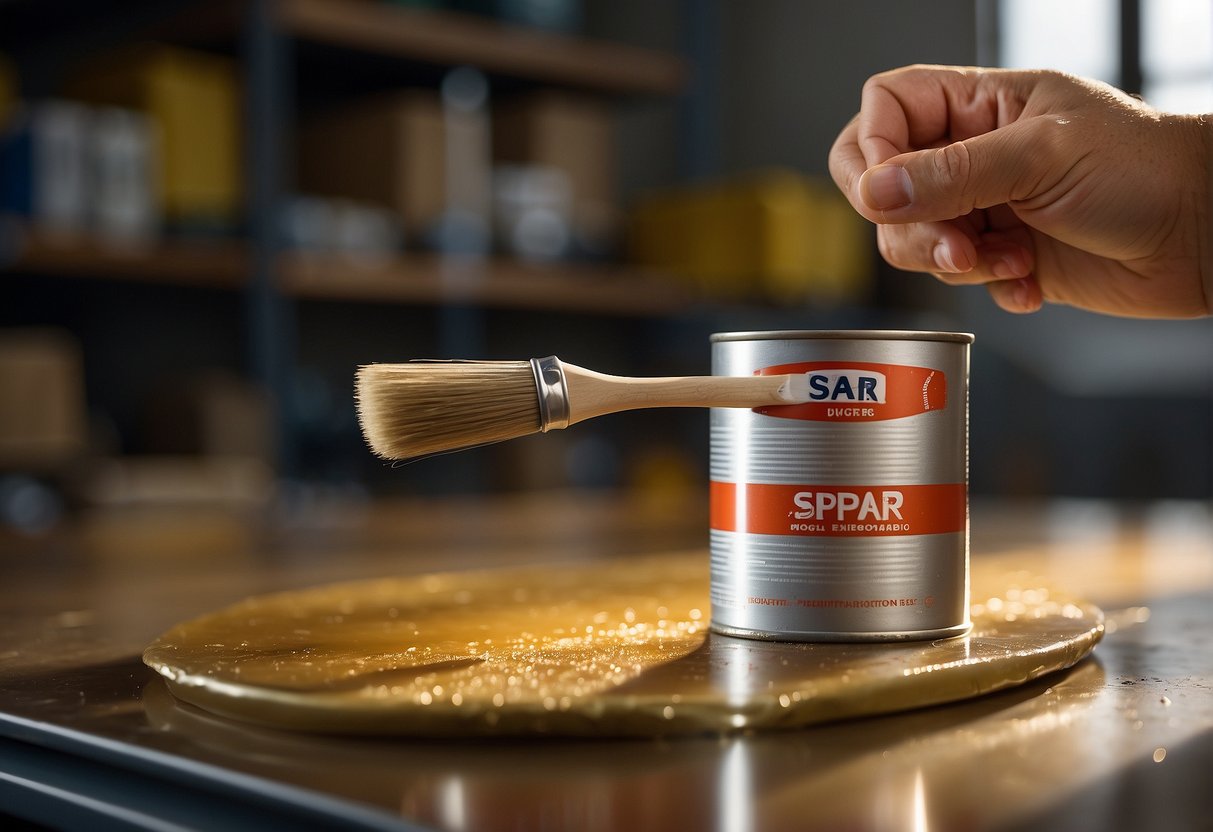As a woodworker, you may be familiar with epoxy and spar urethane finishes. Epoxy is a popular choice for providing a durable, long-lasting finish, while spar urethane is often used for its excellent UV resistance and ability to expand and contract with the wood. But have you ever considered using spar urethane over epoxy?
Applying spar urethane over epoxy can provide additional protection against the sun’s harmful rays, which can cause fading and graying of the wood. Spar urethane contains special oils that allow it to expand and contract with the wood, preventing cracks as temperatures and seasons change. However, there are some important considerations to keep in mind when using spar urethane over epoxy, such as surface preparation and application techniques.
Key Takeaways
- Applying spar urethane over epoxy can provide additional protection against the sun’s harmful rays.
- Proper surface preparation and application techniques are important when using spar urethane over epoxy.
- Curing and protection are key considerations when using spar urethane over epoxy.
Understanding Epoxy and Spar Urethane
As a DIY enthusiast, I have come across various wood finishes, but none compare to the beauty and durability of epoxy resin and spar urethane. Epoxy resin is a two-part adhesive consisting of a resin and a hardener. When mixed, the two parts chemically react to form a hard, plastic-like material that bonds strongly to various surfaces, including wood. Spar urethane, on the other hand, is a clear, protective wood finish that forms a durable barrier against moisture, UV rays, and other environmental elements.
Chemical Properties of Epoxy Resin
Epoxy resin is a thermosetting polymer that cures when exposed to heat or a catalyst. It is known for its excellent adhesion, high strength, and resistance to moisture and chemicals. Epoxy comes in two parts, the resin and the hardener, that must be mixed in the right proportion to activate the curing process. Epoxy resin can be either oil-based or water-based, with the latter being more eco-friendly and easier to clean up.
Characteristics of Spar Urethane
Spar urethane is a type of varnish that is specifically designed for outdoor use. It contains a blend of urethane resins and oil that provide excellent protection against moisture, UV rays, and other environmental factors. Spar urethane comes in both oil-based and water-based formulations, with the former being more durable and long-lasting. It is also available in gloss, semi-gloss, and satin finishes, depending on your preference.
Overall, epoxy resin and spar urethane are two of the most popular wood finishes in the market today. While epoxy resin provides excellent adhesion and strength, spar urethane offers superior protection against the elements. When used together, they can create a beautiful and durable wood finish that can withstand the test of time.
Surface Preparation and Application
When applying spar urethane over epoxy, proper surface preparation is crucial to ensure a durable and long-lasting finish. In this section, I will cover the steps required to prepare wood surfaces, apply epoxy as a base, and topcoat with spar urethane.
Preparing Wood Surfaces
Before applying any coating, the wood surface must be sanded to remove any roughness or imperfections. Start by sanding the surface with a coarse grit sandpaper, such as 80 grit, and then progress to finer grits, such as 120 and 220 grit, until the surface is smooth to the touch. Be sure to sand with the grain of the wood to avoid creating scratches or marks.
Once the sanding is complete, the surface must be cleaned thoroughly to remove any dust or debris. Use a vacuum cleaner to remove any loose particles and then wipe the surface with a tack cloth to remove any remaining dust. Finally, clean the surface with a mineral spirit to remove any grease or oil.
Applying Epoxy as a Base
After the wood surface is prepared, the epoxy can be applied as a base coat. Follow the manufacturer’s instructions for mixing the epoxy and apply it evenly with a brush. Be sure to work in small sections to avoid the epoxy drying too quickly.
Once the epoxy is applied, it must be left to cure according to the manufacturer’s instructions. This usually takes between 24 and 48 hours, depending on the temperature and humidity.
Top Coating with Spar Urethane
After the epoxy has cured, the surface can be top-coated with spar urethane. Apply the spar urethane evenly with a brush, working in the direction of the grain. Be sure to work in small sections to avoid the urethane drying too quickly.
After the first coat of spar urethane has been applied, wait for it to dry according to the manufacturer’s instructions before applying a second coat. Depending on the desired level of protection, two or three coats of spar urethane may be required.
In summary, proper surface preparation is essential when applying spar urethane over epoxy. Sand the surface with a coarse grit sandpaper, clean it thoroughly, and apply the epoxy as a base coat. Once the epoxy has cured, topcoat the surface with spar urethane, applying two or three coats for maximum protection.
Application Techniques and Tips
When it comes to applying spar urethane over epoxy, there are a few techniques and tips that can help you achieve the best results. Here are some of the most important things to keep in mind:
Brushing vs. Spraying
One of the first decisions you’ll need to make is whether to apply the spar urethane with a brush or a spray gun. Both methods can work well, but each has its own advantages and disadvantages.
Brushing is a good choice if you’re working with a small area or if you want to achieve a more textured finish. To get the best results, use a high-quality brush and apply the urethane in thin, even coats. You may also want to consider using a sponge brush, which can help minimize brush marks.
Spraying is a good choice if you’re working with a large area or if you want to achieve a smoother finish. To get the best results, use a spray gun and thin the urethane with mineral spirits or another appropriate solvent. Be sure to wear a respirator and work in a well-ventilated area to avoid inhaling fumes.
Avoiding Bubbles and Streaks
One of the biggest challenges when applying spar urethane over epoxy is avoiding bubbles and streaks. To minimize the risk of these issues, here are a few tips:
- Thin the urethane with mineral spirits or another appropriate solvent to improve flow and leveling.
- Mix the urethane thoroughly before applying it to ensure that it’s well blended.
- Apply the urethane in thin, even coats to avoid buildup and drips.
- Wet sand the surface between coats to remove any bubbles or imperfections.
Achieving an Even Finish
To achieve an even finish when applying spar urethane over epoxy, it’s important to take your time and work carefully. Here are a few tips to keep in mind:
- Apply the urethane in thin, even coats, and avoid overworking the surface.
- Use a high-quality brush or spray gun to ensure that the urethane is applied evenly.
- Work in a well-lit area so that you can see any imperfections as you work.
- Wet sand the surface between coats to remove any bumps or rough spots.
By following these application techniques and tips, you can achieve a beautiful, durable finish when applying spar urethane over epoxy.
Curing and Protection
When it comes to applying spar urethane over epoxy, it is essential to understand the curing and protection process. This will ensure that the final product is strong, durable, and long-lasting. In this section, I will discuss the drying time and curing process, as well as the protective qualities and maintenance of spar urethane over epoxy.
Drying Time and Curing Process
Spar urethane over epoxy requires adequate drying time to ensure that the final product is strong and durable. The drying time of spar urethane over epoxy can vary depending on the environmental conditions. The ideal temperature for the curing process is between 60 and 80 degrees Fahrenheit. The curing process can take up to 72 hours to complete.
It is essential to note that the curing process is different from the drying process. The drying process is the time it takes for the solvents to evaporate, while the curing process is the time it takes for the urethane to chemically bond with the epoxy. Therefore, it is crucial to allow enough time for the curing process to complete before exposing the surface to wear and tear.
Protective Qualities and Maintenance
Spar urethane over epoxy offers excellent protective qualities against wear, peeling, and other forms of damage. The mechanical bond between the epoxy and the urethane creates a strong and durable surface that can withstand the test of time. Additionally, spar urethane over epoxy provides a clear coat and shine that enhances the natural beauty of the wood.
To maintain the protective qualities of spar urethane over epoxy, it is essential to perform regular maintenance. This includes cleaning the surface with a mild soap and water solution and avoiding harsh chemicals that can damage the surface. Additionally, it is essential to inspect the surface regularly for signs of wear and tear and reapply spar urethane as needed to maintain the protective qualities.
In conclusion, understanding the curing and protection process of spar urethane over epoxy is essential to ensure that the final product is strong, durable, and long-lasting. By following the drying time and curing process and performing regular maintenance, you can enjoy the protective qualities of spar urethane over epoxy for years to come.
Advanced Techniques and Considerations
Polishing and Final Touches
After applying spar urethane over epoxy, you may want to polish the surface to achieve a smoother, shinier finish. To do this, you can use a sanding block or an orbital sander with a fine-grit sandpaper, followed by a polishing compound. Be sure to remove any dust or debris before polishing.
If you prefer a more convenient option, you can use an aerosol spray that combines the polishing and final touch steps. This can save you time and effort, but be sure to follow the instructions carefully and use the spray in a well-ventilated area.
Health and Safety Precautions
When working with spar urethane and epoxy, it is important to take proper health and safety precautions. Wear gloves and a respirator to protect your skin and lungs from harmful chemicals. Be sure to work in a well-ventilated area and avoid inhaling the fumes.
It is also important to wait for the spar urethane and epoxy to fully cure before using or touching the surface. This can take several days or even weeks, depending on the product and environment. Abrasion resistance is a key benefit of spar urethane, but this can only be achieved if the product is allowed to fully cure.
In summary, polishing and final touches can enhance the appearance of spar urethane over epoxy, but be sure to take proper health and safety precautions and allow the product to fully cure before use.
Frequently Asked Questions
How do I apply spar urethane over an epoxy-coated surface?
To apply spar urethane over an epoxy-coated surface, you need to ensure that the epoxy is fully cured and sanded smooth. Then, clean the surface thoroughly to remove any dust or debris, and apply a thin coat of spar urethane with a brush or spray gun. Let the first coat dry completely, and then lightly sand the surface with fine-grit sandpaper before applying subsequent coats. Repeat this process until you achieve the desired level of protection and finish.
What are the advantages of using spar urethane versus epoxy for finishing?
Spar urethane offers a more durable and weather-resistant finish than epoxy. It is specifically designed to withstand exposure to sunlight, water, and other outdoor elements, making it an ideal choice for finishing outdoor furniture, boats, and other wooden structures. Spar urethane also provides a clear, glossy finish that enhances the natural beauty of the wood.
Is it possible to apply urethane over a fully cured epoxy resin?
Yes, it is possible to apply urethane over a fully cured epoxy resin. However, it is important to ensure that the epoxy is sanded smooth and thoroughly cleaned before applying the urethane. Additionally, it is recommended to apply a thin coat of urethane first to test for compatibility and adhesion before applying additional coats.
What is the best finish to use over epoxy resin for outdoor exposure?
Spar urethane is the best finish to use over epoxy resin for outdoor exposure. It provides superior weather resistance and durability compared to other finishes, such as polyurethane or varnish. Spar urethane is specifically designed to withstand exposure to sunlight, water, and other outdoor elements, making it an ideal choice for outdoor applications.
How does marine spar urethane perform over epoxy for water resistance?
Marine spar urethane performs exceptionally well over epoxy for water resistance. It is specifically designed to withstand exposure to saltwater, UV radiation, and other harsh marine environments. When applied correctly, marine spar urethane provides a durable and long-lasting finish that protects against water damage and other forms of degradation.
Can polyurethane be used successfully over epoxy for a durable finish?
Yes, polyurethane can be used successfully over epoxy for a durable finish. However, it is important to ensure that the epoxy is fully cured and sanded smooth before applying the polyurethane. Additionally, it is recommended to test for compatibility and adhesion by applying a thin coat of polyurethane first before applying additional coats. While polyurethane provides a durable and long-lasting finish, it may not offer the same level of weather resistance as spar urethane for outdoor applications.

Hi, I’m Sal Muller of Tooltrip.com. My DIY experience led me to understand essential power tools for home projects. Tooltrip.com guides enthusiasts and professionals in choosing right tools for any job. I provide concise top tool reviews for easier, efficient DIY.

